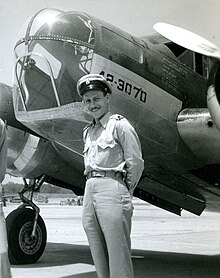
The Royal Netherlands Air Force is the military aviation branch of the Netherlands Armed Forces. It was created in 1953; its ancestor, the Luchtvaartafdeling of the Dutch Army, was founded in 1913. The aerobatic display team of the Royal Netherlands Air Force, active from 1979 until 2019, was the Solo Display Team.
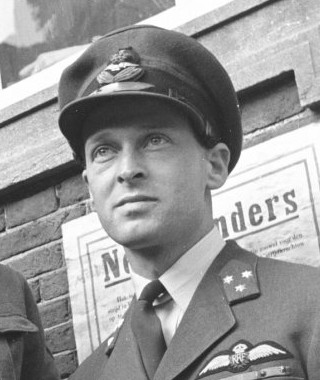
Siebren Erik Hazelhoff Roelfzema was a Dutch writer who became a resistance fighter and RAF pilot during the Second World War. Near the end of the war he was adjudant (assistant) to Queen Wilhelmina. He was made Knight 4th class of the Military William Order. He is perhaps best known for his book Soldaat van Oranje which described his experiences in the war. His book was later made into a film. The book and the film about it eventually were made into the most successful Dutch musical ever, premiering 30 October 2010.
The Netherlands entered World War II on May 10, 1940, when invading German forces quickly overran the country. On December 7, 1941, after the attack on Pearl Harbor, the Netherlands government in exile also declared war on Japan. Operation Market Garden, which started in 1944, liberated the southern and eastern parts of the country, but full liberation did not come until the surrender of Germany on May 5, 1945.
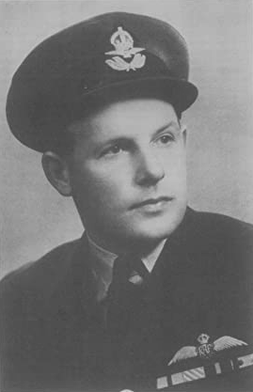
Bram van der Stok,, also known as Bob van der Stok, was a World War II fighter pilot and flying ace, and is the most decorated aviator in Dutch history.

The Dutch resistance to the Nazi occupation of the Netherlands during World War II can be mainly characterized as non-violent. The primary organizers were the Communist Party, churches, and independent groups. Over 300,000 people were hidden from German authorities in the autumn of 1944 by 60,000 to 200,000 illegal landlords and caretakers. These activities were tolerated knowingly by some one million people, including a few individuals among German occupiers and military.

Wing Commander General František Peřina was a Czech fighter pilot, an ace during World War II with the French Armée de l'Air, who also served twice with Britain's Royal Air Force.

Soesterberg Air Base was a Royal Netherlands Air Force (RNLAF) military air base located in Soesterberg, 14 kilometres (8.7 mi) east-northeast of Utrecht. It was first established as an airfield in 1911, and in 1913, the Dutch Army bought the field and established the Army Aviation Division.

On 4 July 1989, a pilotless MiG-23 jet fighter of the Soviet Air Forces crashed into a house in Bellegem, near Kortrijk, Belgium, killing one person. The pilot had ejected over an hour earlier near Kołobrzeg, Poland, after experiencing technical problems, but the aircraft continued flying for around 900 km (600 mi) before running out of fuel and descending into the ground.
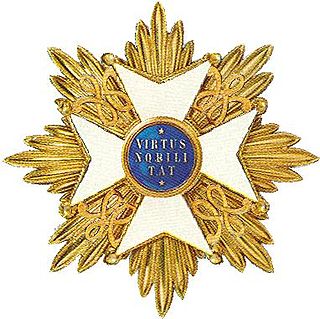
In the Dutch honours system, most orders are the responsibility of ministers of the Netherlands Government. The house orders, however, are awarded at the discretion of the Dutch monarch alone.
Gerardus Meinardus Bruggink was a Dutch pilot of the Royal Netherlands East Indies Army Air Force. A recipient of the Military Order of William, he was one of only four Dutch pilots to dogfight the Japanese in the Battle of Java.

Prince Bernhard of Lippe-Biesterfeld was a German nobleman who was Prince consort of the Netherlands from 6 September 1948 to 30 April 1980 as the husband of Queen Juliana. They were the parents of four children, including Beatrix, who was Queen of the Netherlands from 1980 to 2013.

Albert Eduard Stoové was a sergeant in the Royal Netherlands East Indies Army Air Force at the start of World War II. For several actions with the 2-VLG-V squadron under command of Captain Jacob Pieter van Helsdingen he received the Vliegerkruis on 24 February 1942.

The 1961 F-84 Thunderstreak incident, occurring on 14 September 1961, was an incident during the Cold War, in which two Republic F-84F Thunderstreak fighter-bombers of JaBoG 32 of the German Air Force (Luftwaffe) crossed into East German airspace because of a navigational error, before landing at Berlin Tegel Airport. The two planes successfully evaded a large number of Soviet fighter planes by finding cover in a heavy layer of clouds, but also by the actions of an airman at the United States Air Force (USAF) air route traffic control center at Berlin Tempelhof Airport who ordered the planes on to Berlin rather than forcing them to turn around and face the pursuing fighter planes. The event came at a historically difficult time in relations between West Germany and East Germany. Only a month before, the Berlin Wall had been built, which completely cut off West Berlin from surrounding East Germany and from East Berlin. It also came three days before the West German federal election, held on 17 September 1961.
Johan Willem Emile Louis Hilgers, more commonly known as Jan Hilgers or John Hilgers, was an Indo (Eurasian) aviator and one of the leading pioneers of Dutch aviation. He was the first Dutch pilot to complete a flight in Dutch airspace 29 July 1910. For the official memorial of this in 1955 a monument was erected in the town of Ede, also a road, the "Jan Hilgersweg" was named after him.
The No. 322 Squadron, being the oldest operational squadron of the Royal Netherlands Air Force, was founded at RAF Woodvale on 12 June 1943 as No. 322 (Dutch) Squadron with Dutch personnel under Royal Air Force control. At the end of the war 322e Jachtvliegtuig Afdeling of the Royal Netherlands Army was formed from the RAF squadron.

Willem Frederick August "Gus" Winckel was a Dutch military officer and pilot who flew for the Royal Netherlands East Indies Air Force (ML-KNIL) in World War II. During the attack on Broome, Western Australia, on 3 March 1942, Winckel managed to land his plane full of refugees safely on the Broome airstrip just before the Japanese attack. He then dismounted the plane's machine gun and shot down one of the Japanese fighters, the only Allied "kill" during the attack.

Engelandvaarder, was the term given during the Second World War to men and women who attempted to escape from the Netherlands across over 100 miles of the North Sea to reach England and freedom. Only about one in ten were successful in the crossing, with most just disappearing in the sea. Once they reached England many joined the Allied forces to help free their country from Nazi Germany. The period covered is between the capitulation of the Dutch armed forces on 15 May 1940 and the Allied invasion of Normandy on 6 June 1944 (D-Day).
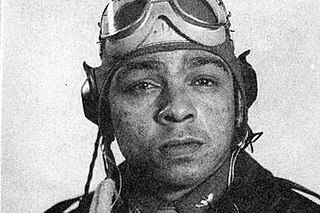
Walter P. Manning was an American fighter pilot of the primarily African American Tuskegee Airmen. He flew 50 missions, and was awarded the Air Medal for heroism six times. After being shot down in 1945, he was captured in Austria and subsequently lynched by a mob. He was posthumously awarded the Congressional Gold Medal in 2007 along with all other Tuskegee Airmen. Manning is the only known black man to have been lynched in Austria during World War II.

Ida Laura Veldhuyzen van Zanten was a Dutch pilot and social worker who was a member of the Dutch resistance during the Second World War and a pilot in the British Air Transport Auxiliary. She was the only woman to receive the Vliegerkruis, the Airman's Cross.

The Decoration for Order and Peace is a military award of the Netherlands. The medal was established on 12 December 1947 by royal decree of Queen Wilhelmina. The medal commemorates at least three months of service in the Dutch East Indies and adjacent waters during the Indonesian National Revolution. It was awarded to members of the Netherlands Armed Forces and the Royal Netherlands East Indies Army. Recipients who were engaged with hostile parties in a military context could be awarded clasps indicating the year of the action.
